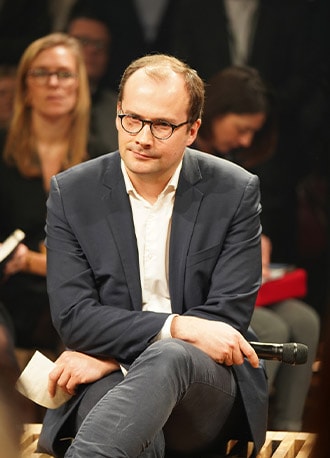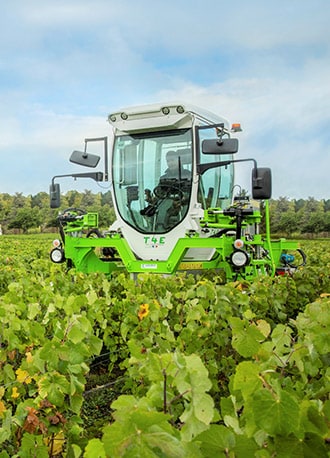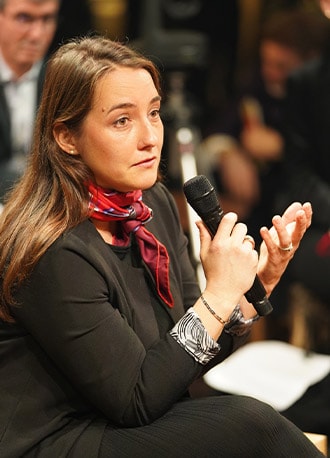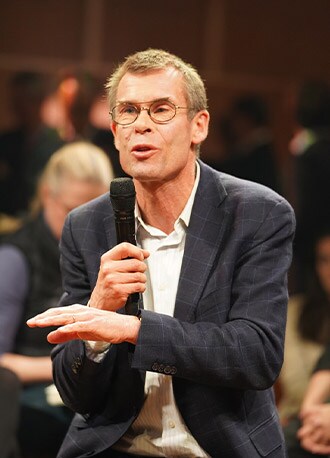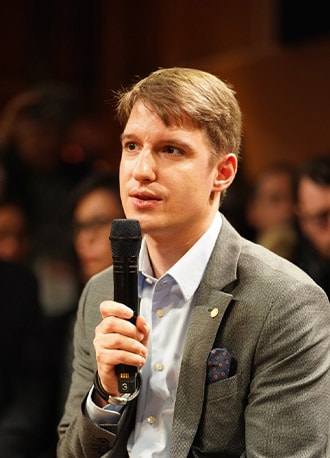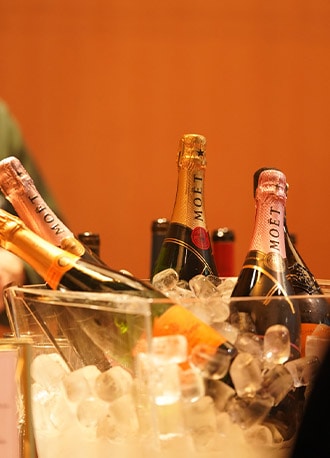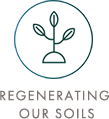COMPANY MENU
SPECIAL COLUMN

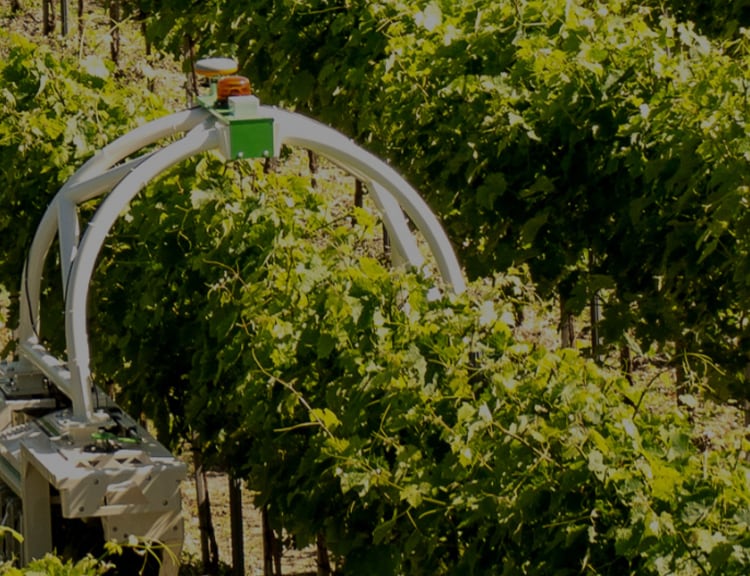
LIVING SOILS
25% of Moët Hennessy vineyards are certified in sustainable agriculture
Support is also provided to get contract farmers certified
Following this discussion, I interviewed Mr. Le Guillou about Moët Hennessy's specific environmental initiatives.
Across the entire group, Moët Hennessy owns 1,500 ha of vineyards in Champagne, 25% of which already have HVE (haute valeur environnementale: “high environmental value”) or VDC (viticulture durable en Champagne: “sustainable viticulture in Champagne”) certification. Veuve Clicquot completely eliminated the use of herbicides in 2017.
According to Le Guillou, early growing of undergrowth in the vineyard prevents soil runoff, and the grass is ploughed out from March to July, when competition between grass and vines is a problem. “We work in the vineyards with lightweight tractors to avoid pressuring the soil, and we even let the sheep graze in the vineyards,” he explained. Pheromone capsules are used to control pests by disrupting their mating process. Rather than limiting these measures to their own vineyards, Moët Hennessy provides feedback from the knowledge they have gathered to the growers who provide grapes to their Champagne houses. Moët Hennessy even backs up the authentication process.
Le Guillou says that Moët Hennessy is dedicated to helping solve climate change, receiving one-third of their total electricity worldwide from green energy (100% in France), and limiting product transportation to railway and sea travel, avoiding the use of diesel and aircrafts where possible. The goal of these efforts is to reduce carbon dioxide emissions.
Initiatives relating to climate change are a necessity
Grape varieties and clones are also changing
In the discussion on the topic “How should we adapt to climate change?”, Pauline Lhote, Winemaking Director at Chandon California, mentioned the following issues.
“California has been described as having a stable Mediterranean climate, but it’s not now. From year to year, the climate changes, and there are vintage differences in the wines,” she said.
She therefore emphasized that it is necessary to implement various initiatives for coping with climate change. Her suggestions included changing row directions and planting densities, canopy management, irrigation practices, and night harvesting.
As a measure against global warming, Portuguese and cross-fertilized grape varieties have recently been made eligible for Bordeaux AOC and Bordeaux Supérieur status. Professor Kees Van Leeuwen of the University of Bordeaux was involved in these revisions, noting that “the same grape variety will have a different wine style if the climate changes.” The selection of stock and clones will become even more important in the future. “In the past, well-ripened clones were popular, but now, late ripening clones will be the focus of attention,” he said.
The youngest ever “world’s best sommelier”
Can he tell which wines are organic?
Marc Almert, who was named the youngest ever Best Sommelier of the World last year at the age of 27, spoke on the topic "Organic, natural, biodynamic, what's the difference?” He engaged in discussion with winemakers from South France and South Africa.
Jasper Raats of the Longridge Wine Estate in South Africa was asked by the moderator to define each type of wine. In his response, he said that organic wine requires “looking down,” biodynamic wine requires “looking down, and then up,” and natural wine requires “looking back.” In other words, organic growing requires looking down at the soil; biodynamic growing is similar to organic, but makers must also look up at the sky to refer to the movements of the celestial bodies; and natural growing requires makers to look back and retrace the past.
Those gathered at the booth asked Almert if he could tell the difference between organic and biodynamic wine in a blind tasting. He replied, “It’s difficult, but I can sometimes correctly guess that a wine might have been made organically or biodynamically based on its aftertaste and complexity.”

A wine journalist who has worked in the industry for 30 years. He started out working for a wine magazine before becoming an independent writer in 1997. In addition to working with wine magazines, he also writes articles on wine for lifestyle magazines. Yanagi is a Chevalier of the Ordre des Coteaux de Champagne, and a Commander of Honor of the Commanderie du Bontemps.
As a global leader in Luxury Wine & Spirits with many iconic Maisons, we have a special responsibility towards our
stakeholders and the planet as a whole. Our original founders strived to be responsible actors. It is our mission to nurture
this heritage by ensuring that people and nature partner together to get the best from the earth and give back to it. Soils,
as a complex ecosystem, are one of earth's most precious resources and a source of prosperity for Moët Hennessy.
The soils of our terroirs, the know-how of our people and the excellence of our products are closely interwoven. But our
commitment goes far beyond soil and terroir. Because taking care of nature is ultimately about taking care of people,
it is also our role to support communities and bring positive change to society. It's about Living Together as one.
Diageo global is also committed to implementing CSR activities in three areas:
Reducing our environmental impact, Promoting positive drinking, and Building thriving communities.
Alcohol is for those who have turned 18 years old.
Drinking alcohol during pregnancy or nursing may adversely affect the development of your fetus or child.
Drink in moderation. Drinking and driving is prohibited by law.
 Armand De Brignac
Armand De Brignac Dom Pérignon
Dom Pérignon Krug
Krug Moët & Chandon
Moët & Chandon Ruinart
Ruinart Veuve Clicquot
Veuve Clicquot Chandon
Chandon Château d’Esclans
Château d’Esclans Château Galoupet
Château Galoupet Château Minuty
Château Minuty Cloudy Bay
Cloudy Bay Joseph Phelps
Joseph Phelps Newton
Newton Numanthia
Numanthia Skyside
Skyside Taylor's
Taylor's Terrazas De Los Andes
Terrazas De Los Andes Ardbeg
Ardbeg Belvedere
Belvedere Glenmorangie
Glenmorangie Hennessy
Hennessy Old Parr
Old Parr Royal Household
Royal Household Talisker
Talisker Volcán de mi Tierra
Volcán de mi Tierra WhistlePig
WhistlePig